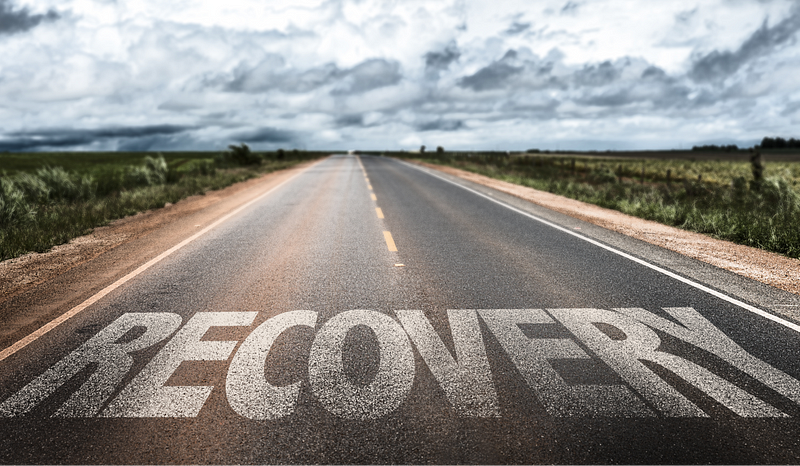Recovery System Training: What You Need to Know
I don’t know about you. But, I have been looking at recovery wrong! Not completely wrong, but what I now believe is was an incomplete view. We are huge proponents of quality recovery at TrainerDay. At first glance this article might appear to be a diversion from that. Let’s get started.
It’s well known that for most athletes sleep the most important aspect of recovery. Diet is important as well. Most of us recognize we can’t go hard everyday forever. In many cases, older athletes break down faster than younger ones. But did you know that recovery adaption is trainable? What does that even mean? Begin your “Recovery Adaption Training Program.”

We know pro cyclists can ride 30 hours a week. Many of us that have tried doing large amounts of training and start breaking down. So pros are super human, right? Well, yes, but there may be more to recovery than they have led us to believe or maybe we are just looking at it wrong.
So in the sports world, we have a lot of blanket rules. We also know that there is exceptions to every rule. We all wonder if we are the exception :)
Strength gurus and trainable recovery
So I have seen coaches directly discussing “recovery adaption training,” although the strength world is starting to bring it up. The cycling world, talks a lot about recovering more/better/faster but not improving recovery adaption itself.
In weight training, a common blanket rule is don’t train the same muscle group two days in a row. Many times, coaches suggest not to do one muscle group more than once a week. Recent reputable sources are clarifying that it is might not be good advice in many cases. Some of the strongest guys in the past did 5+ days a week targeting the same muscles.
I recently read a brilliant book by a serious genius called “Squat Every Day.” The squat is the most demanding strength movement and so this concept really goes against “the rules.” Another guru in weight training is Mark Rippetoe of Starting Strength that has millions of views on his YouTube channel, says beginners should only do 3 sets because they recover faster and can train again sooner (in 48 to 72 hours). So why don’t we take that farther and see what happens with 1-heavy set a day every day?
Here is a somewhat comical video. I like this guy Allan Thrall. He is very much an expert in strength training. Here is he talking about trainable recovery.
[
]()My experience in trainable recovery
After 45 and now at 56, I break down rather quickly, so my body requires lots of recovery. My sleep goes to hell, injuries and sickness crop up and I feel extra tired… My HRV tanks, my Garmin and/or Whoop say “back off buddy.” This especially occurs with regular anaerobic efforts. But!!! But something changed recently. I don’t require as much recovery. Yes, I am sleeping pretty good and my diet is acceptable, but something is different.
We are getting into what seems to be an unexplored territory of science, or at least looking at it a different way. I asked a top science based cycling Coach Andrea Morelli what he thinks. His response was, “In the human body, everything is trainable. So yes, recovery should be trainable.” I don’t mean recovering faster. This is a different focus. This means training my body to require less recovery. It’s hard to differentiate the two, but the way you approach them is very different.
So what am I saying here? Recovery adaption training is an uncharted territory but stands to provide significant benefits for us non-elite athletes. Beginners and masters athlete likely stand the most to gain.
Your Recovery Adaption Training Plan
Before embarking on this journey, I suggest you make sure you have high-quality processes and self-awareness to know if you when you are heading down the over training path.
The point may be rather than total relaxation after a hard workout, you might get more benefit by some additional light exercise and possibly even learn how to get to the point of medium light (z2). We could call this active recovery, but the mindset of this is not to recover more/faster, you want to do that too, but the thinking behind this plan is to require less recovery. Ultimately recovering faster or requiring less recovery might end up at the same destination. A stronger better you.
Next, I will create a follow-up article on ideas of how to kick start your recovery adaption training program. Follow us here on Medium, on Facebook, or Instagram to get your blog article updates.
Related Articles
Your Recovery Adaption Plan
If you are the type to go out do some hard training and then think, ok now I really need to recover. I am not going to d...
Guide to Dynamic "Feel-based" Training
Learn how to effectively use TrainerDay's feel-based training features to optimize your workouts based on your body's da...
The Benefits Of A Polarized Approach To Cycling Training
The Benefits of a Polarized Approach to Cycling Training Endurance sports demand discipline, dedication, and a well-stru...
Ready to Optimize Your Training?
Join thousands of cyclists using TrainerDay to reach their performance goals.
Start Training with TrainerDay
